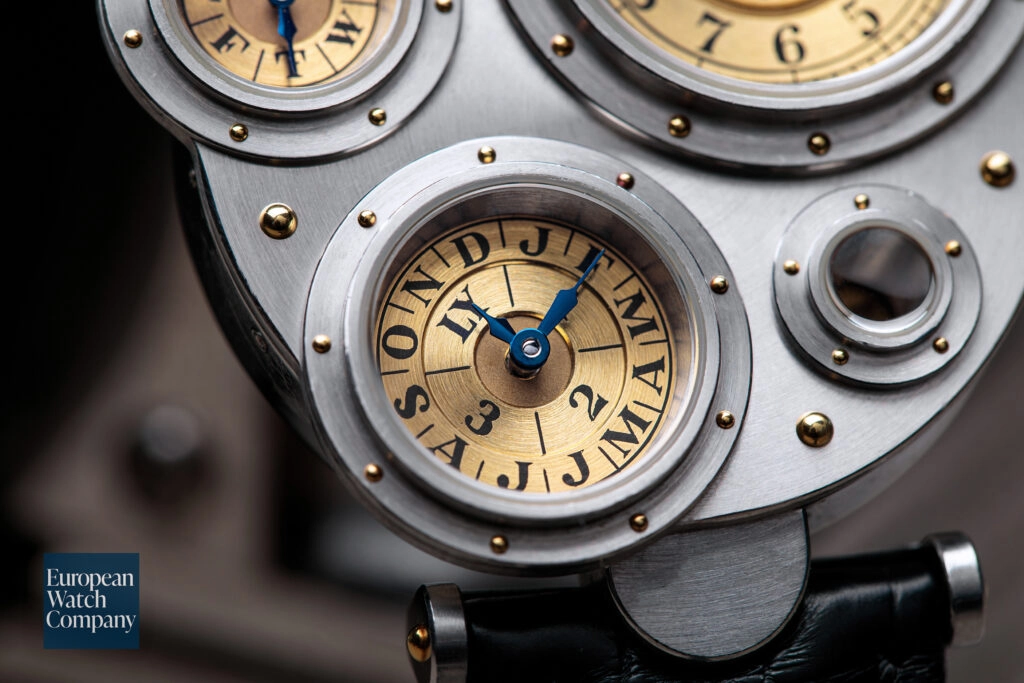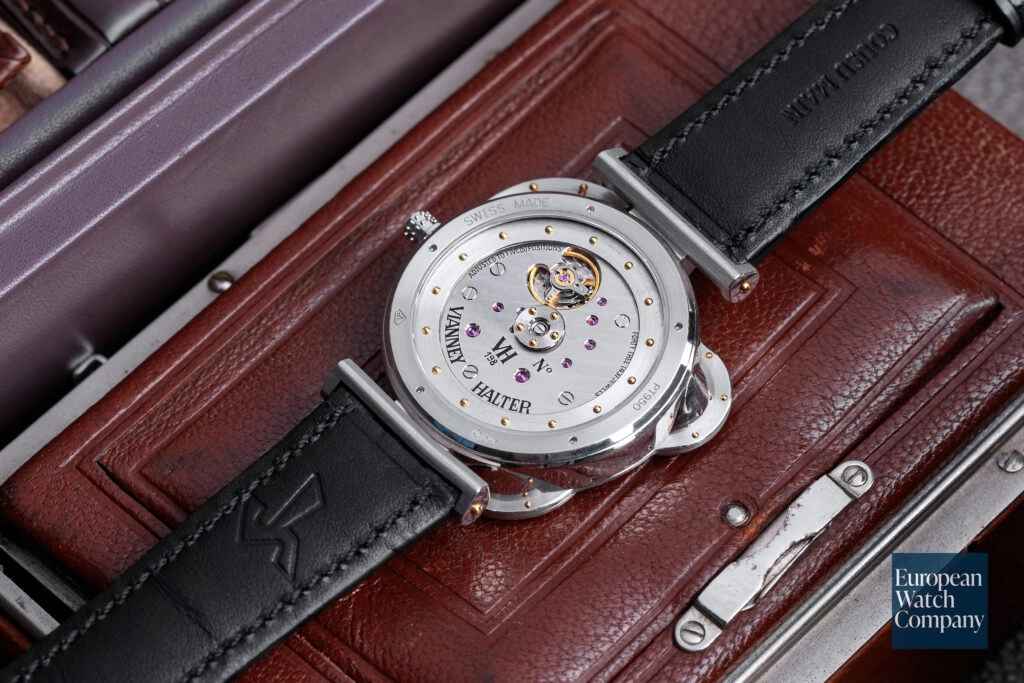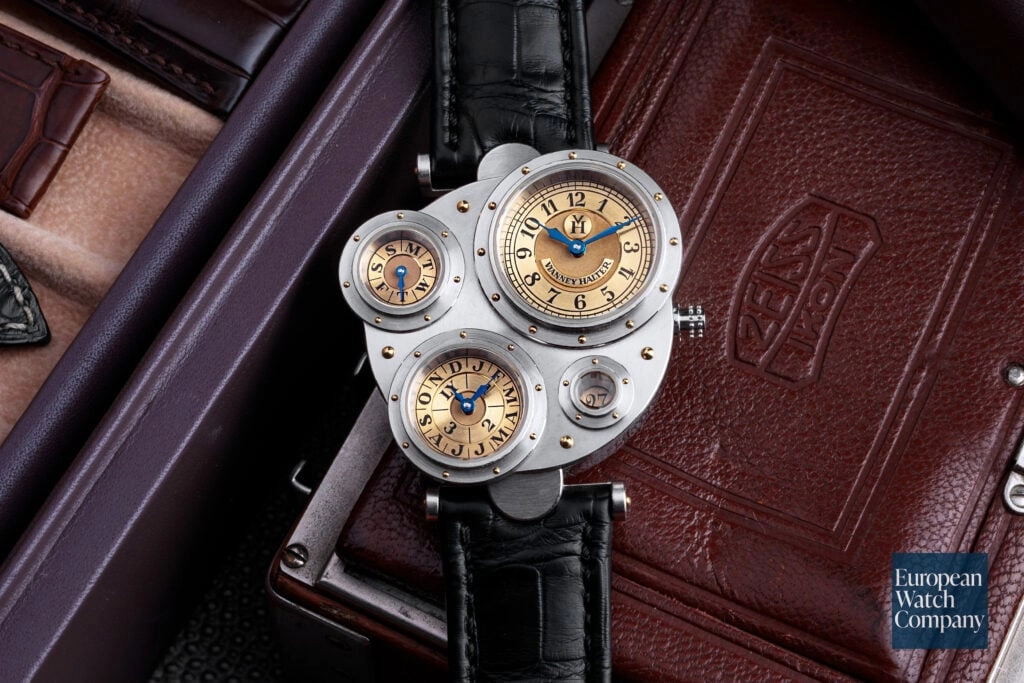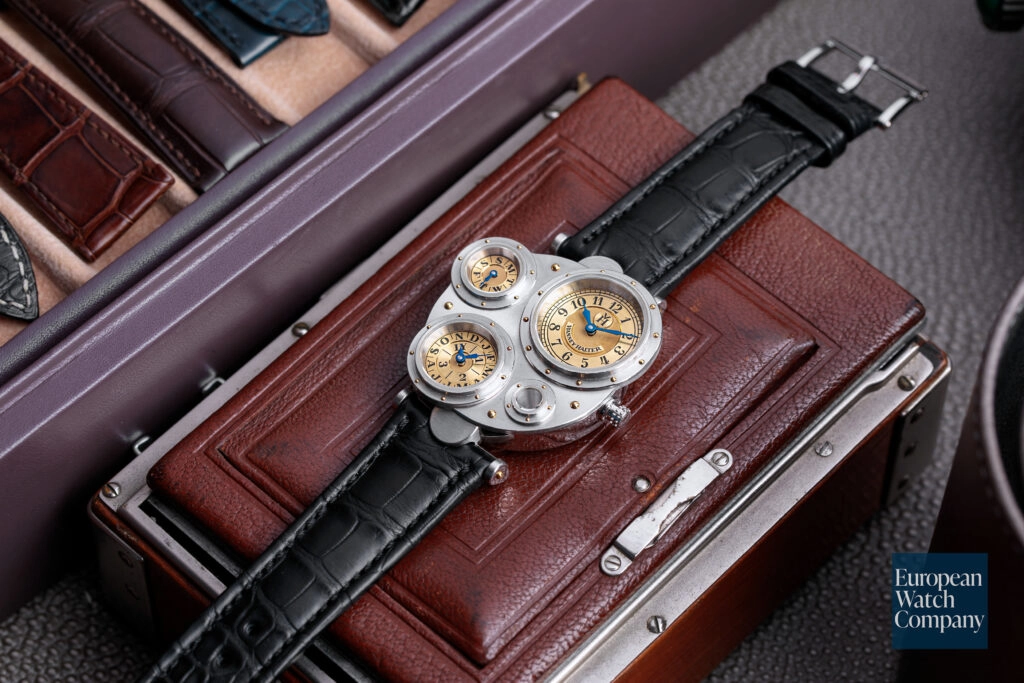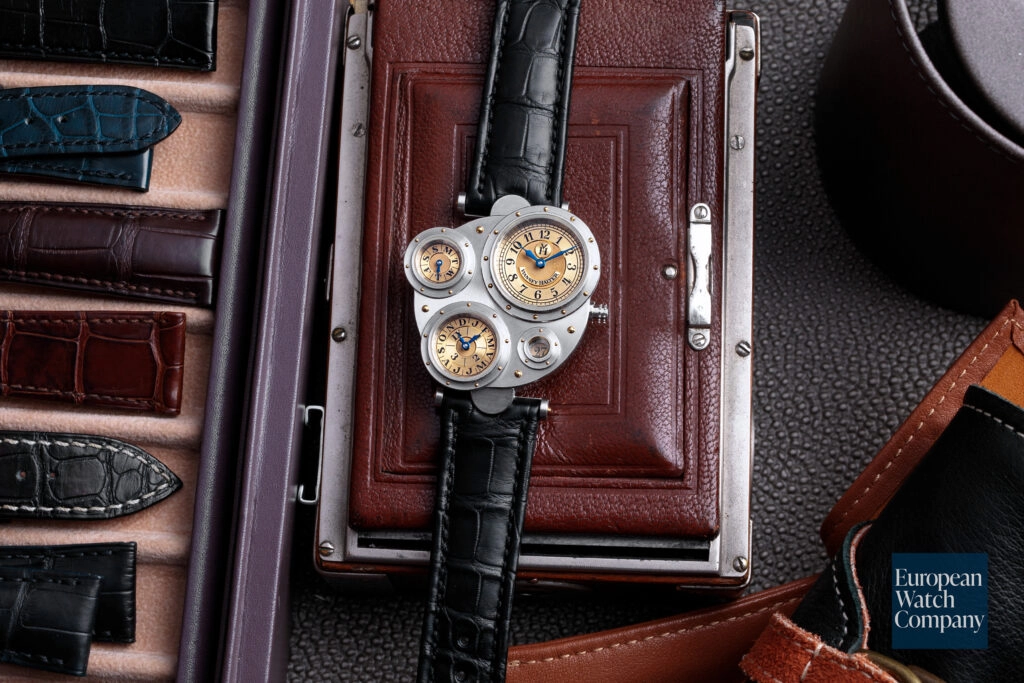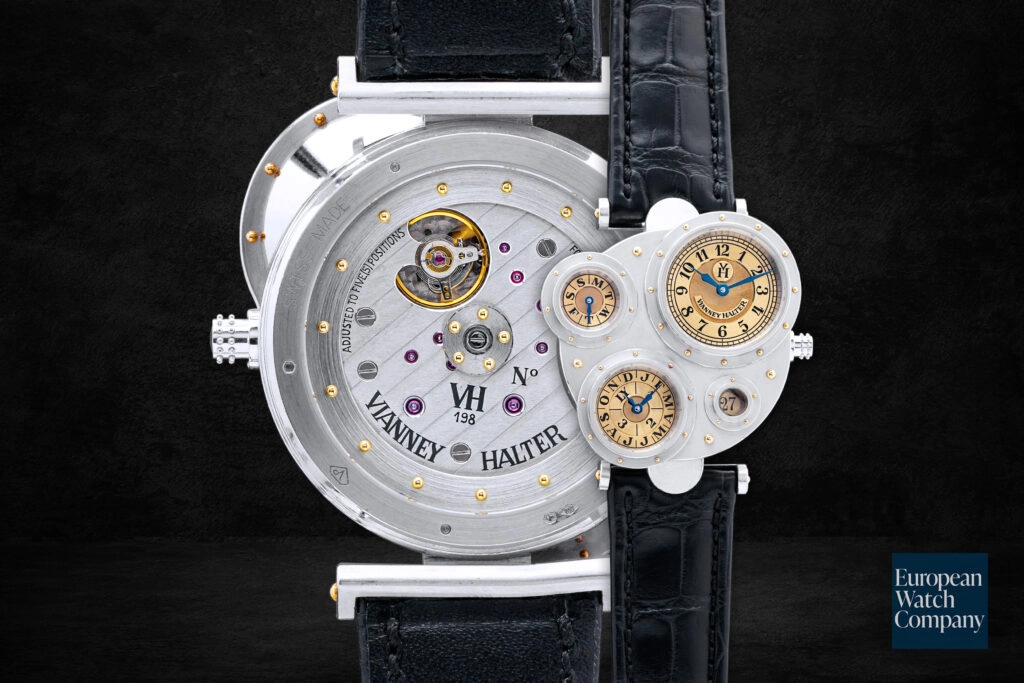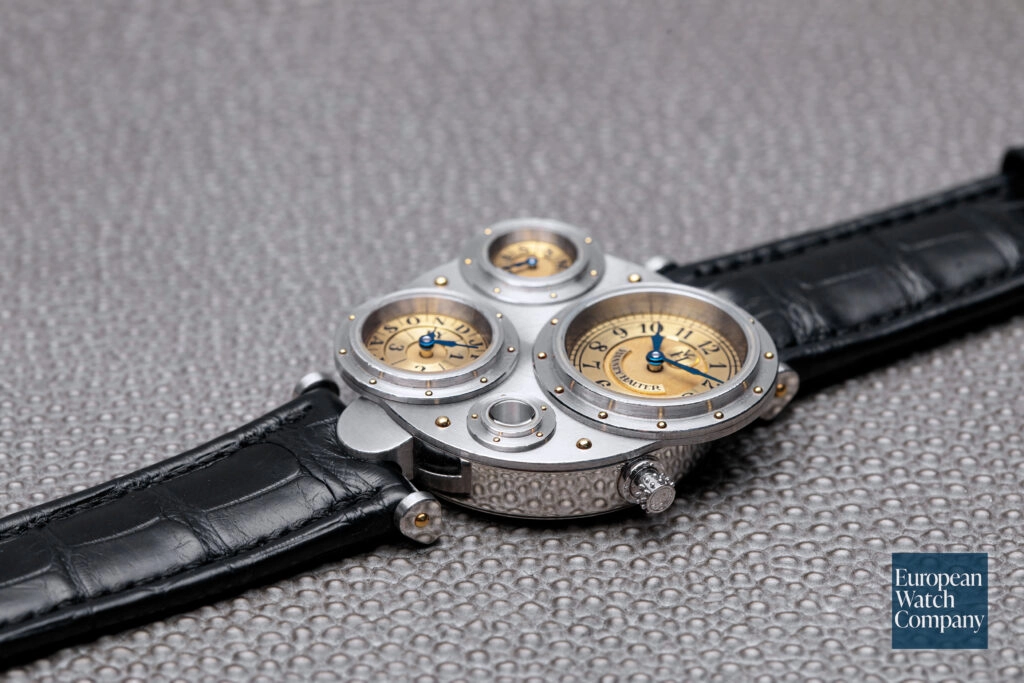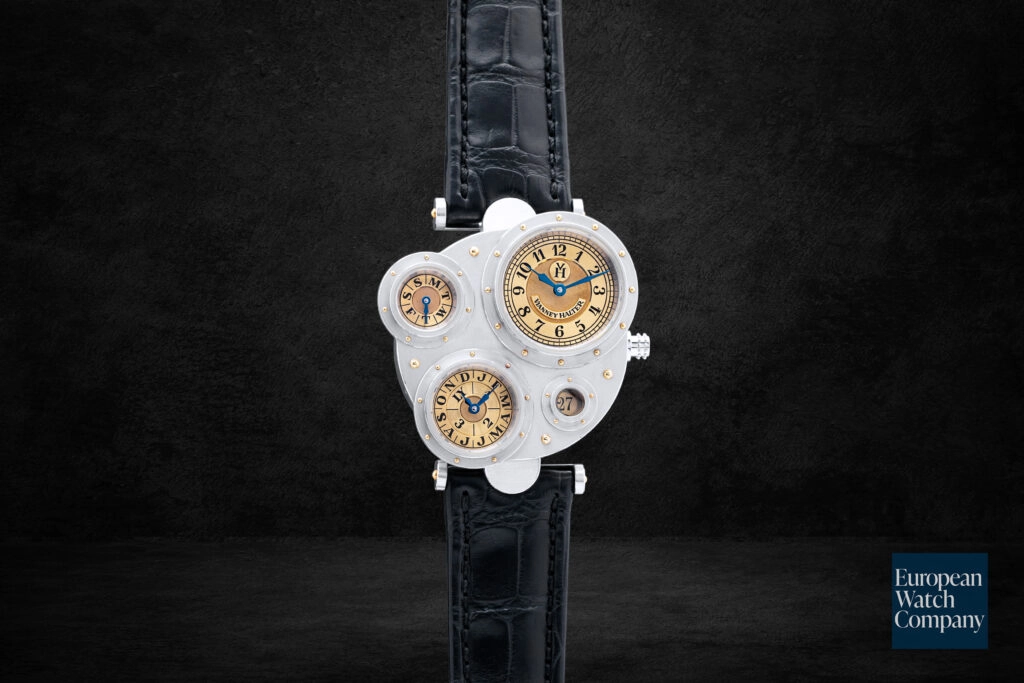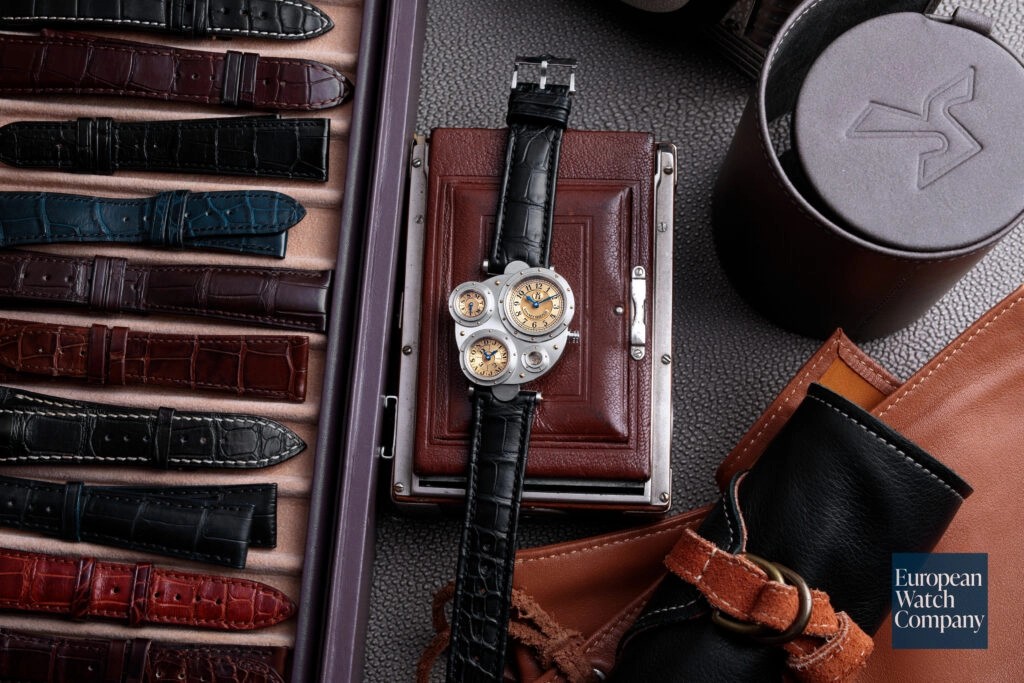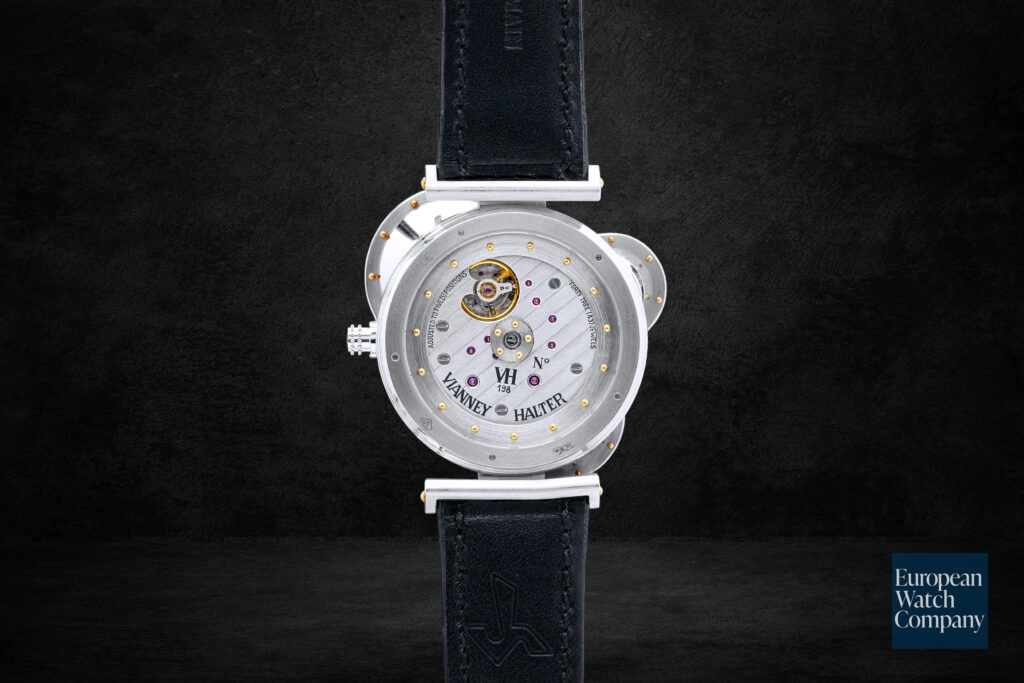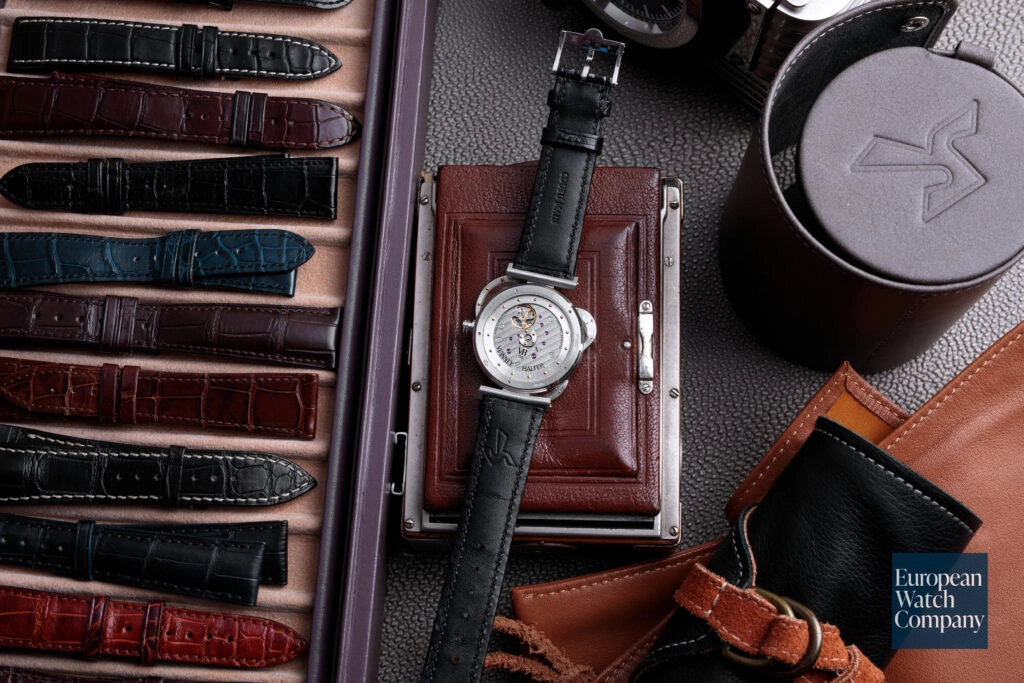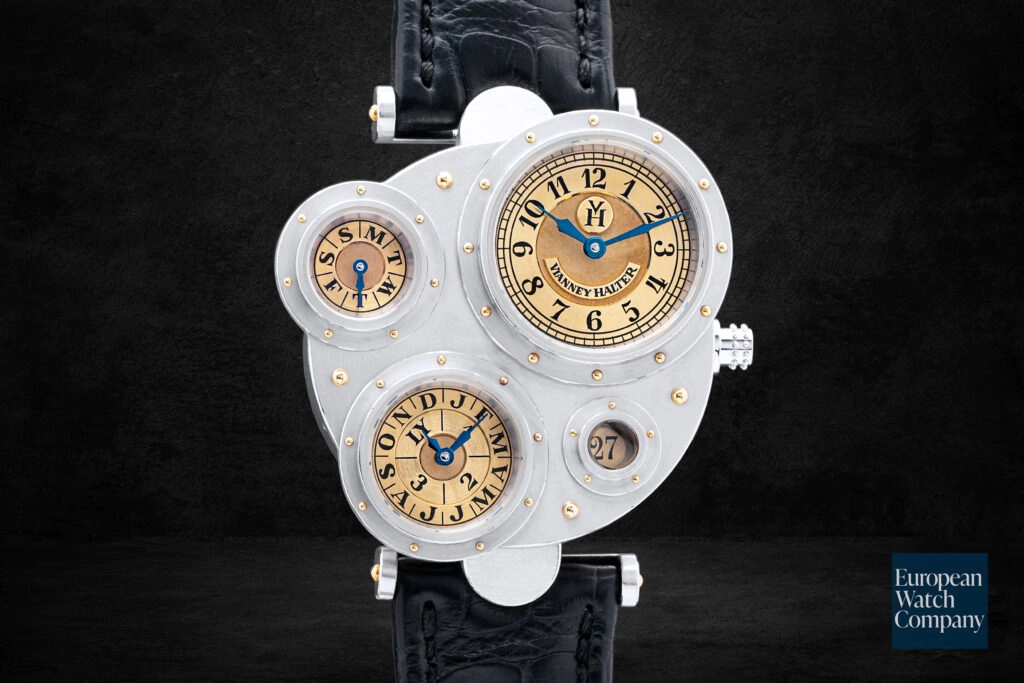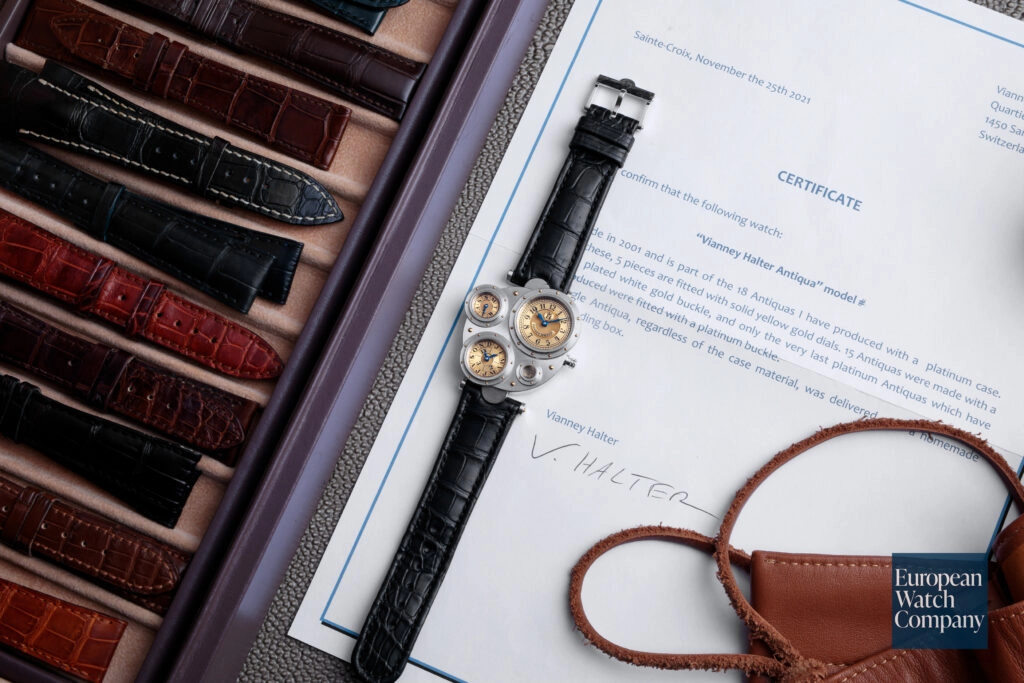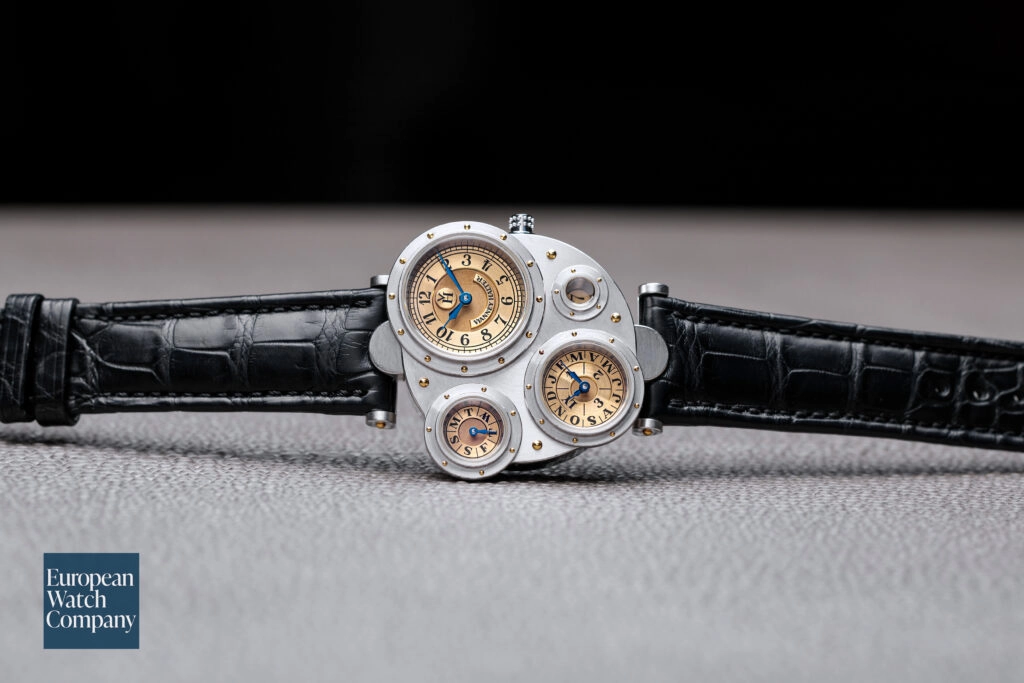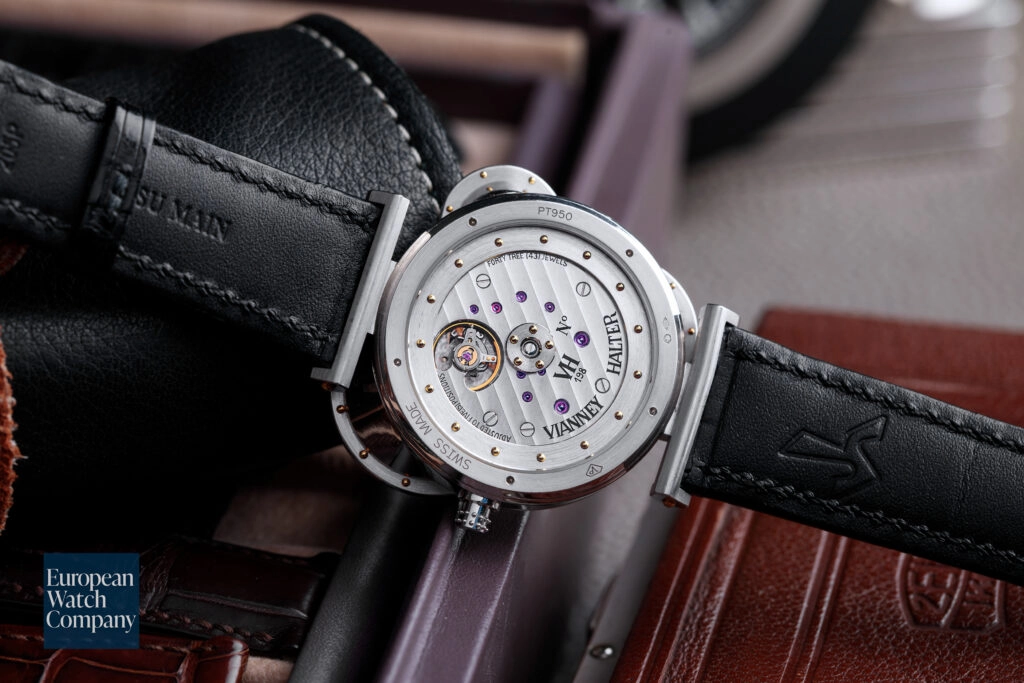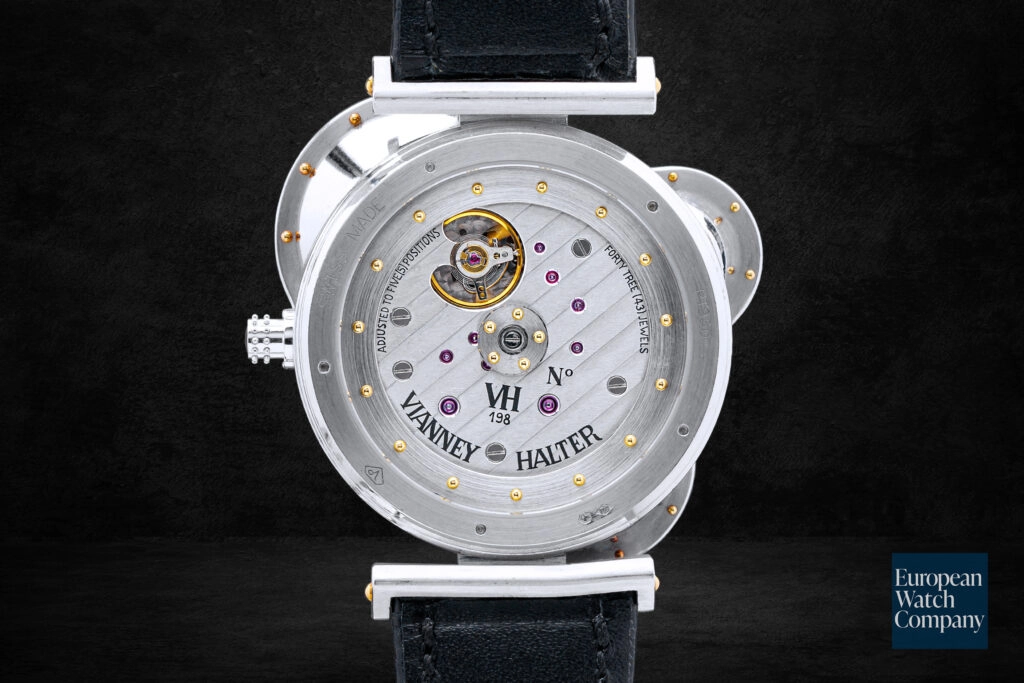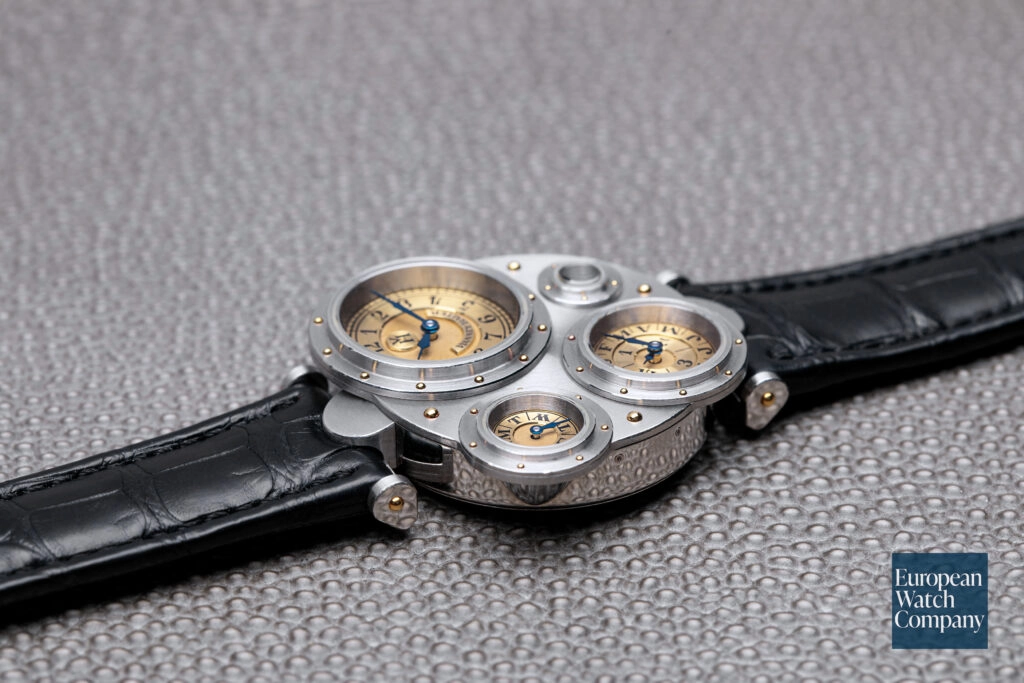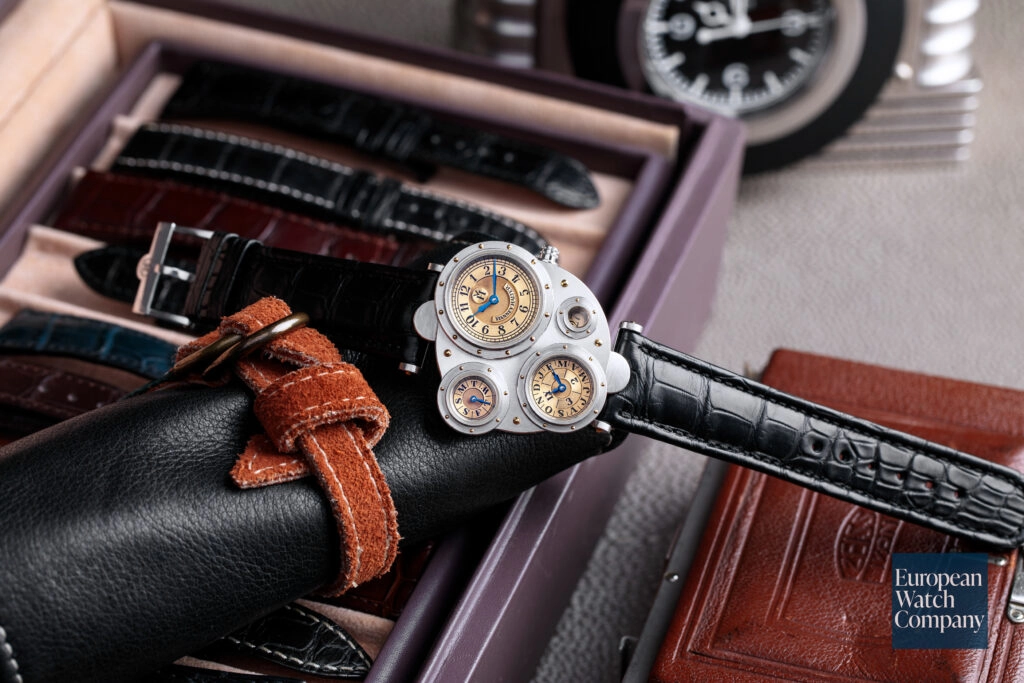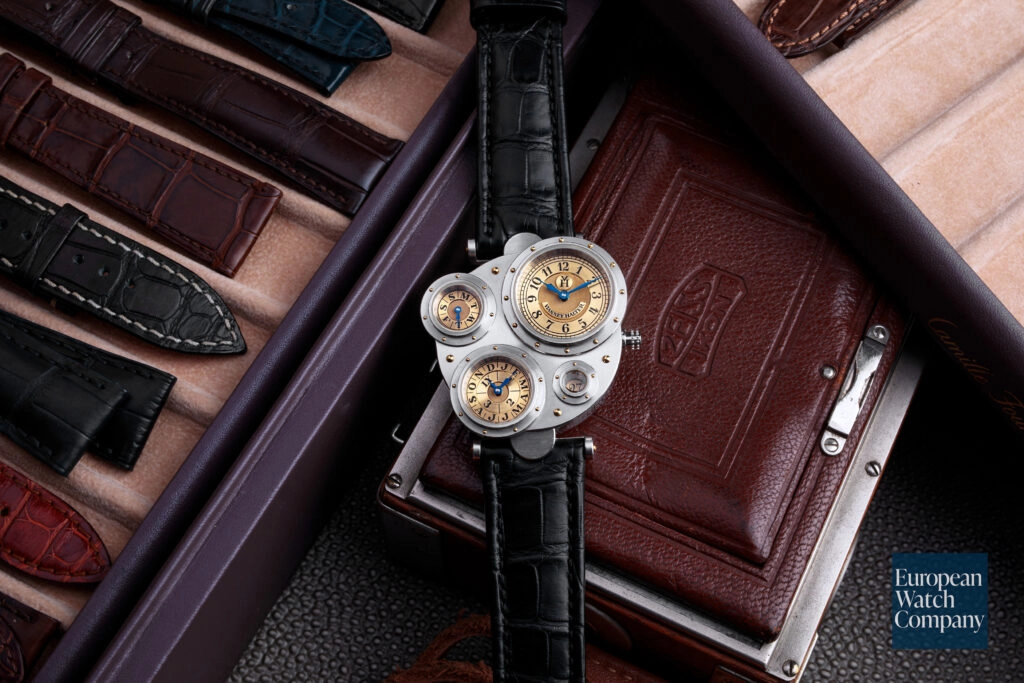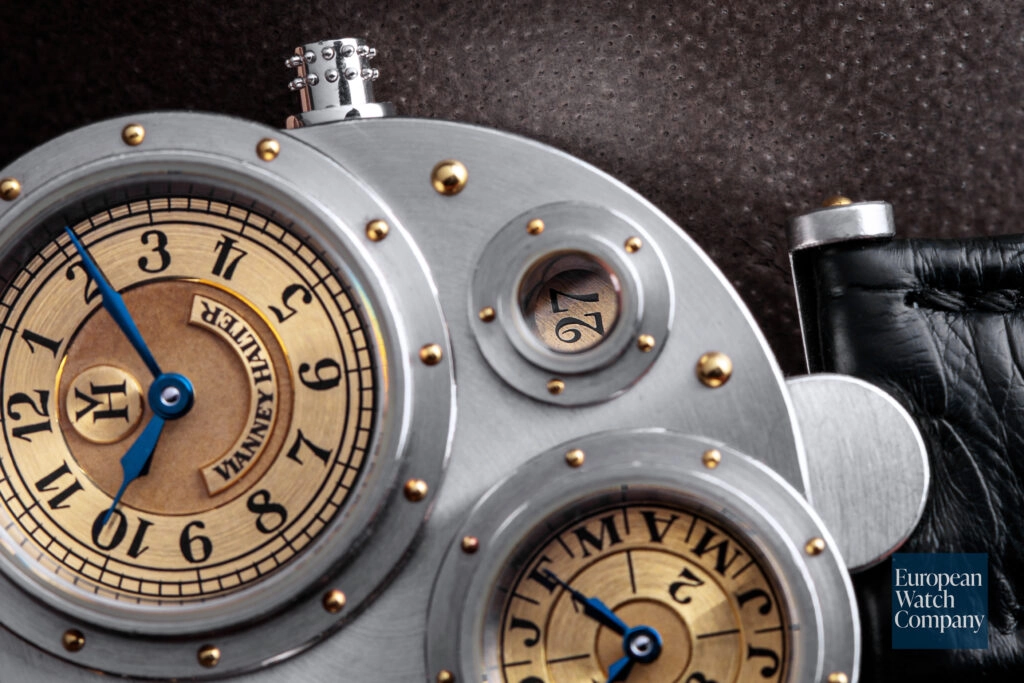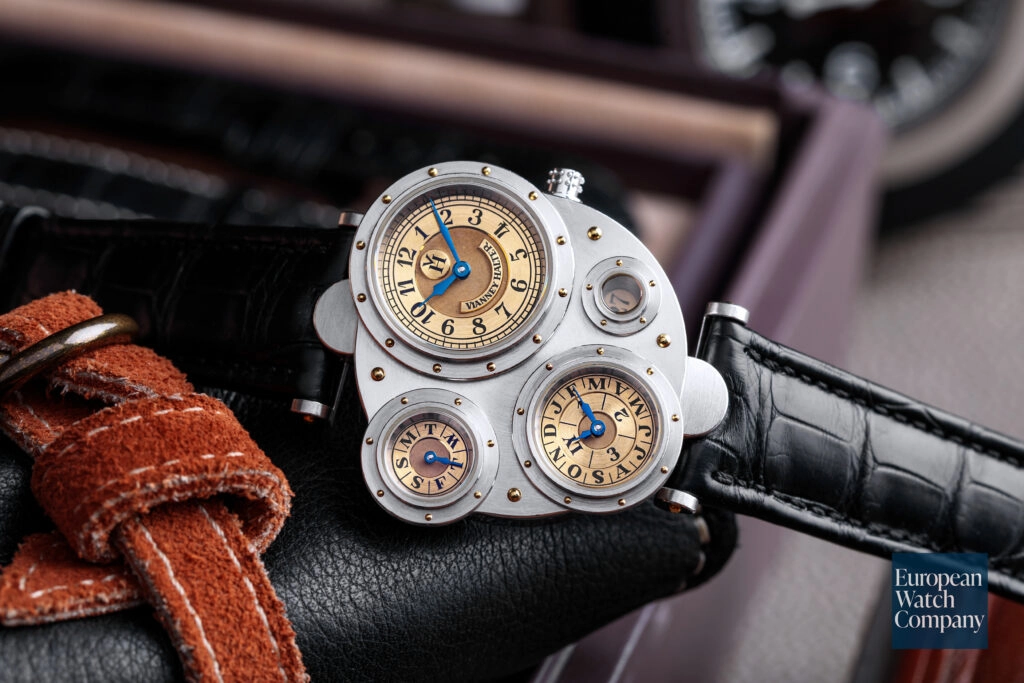Legends Unspoken: The Vianney Halter Antiqua Perpetual Calendar
Indies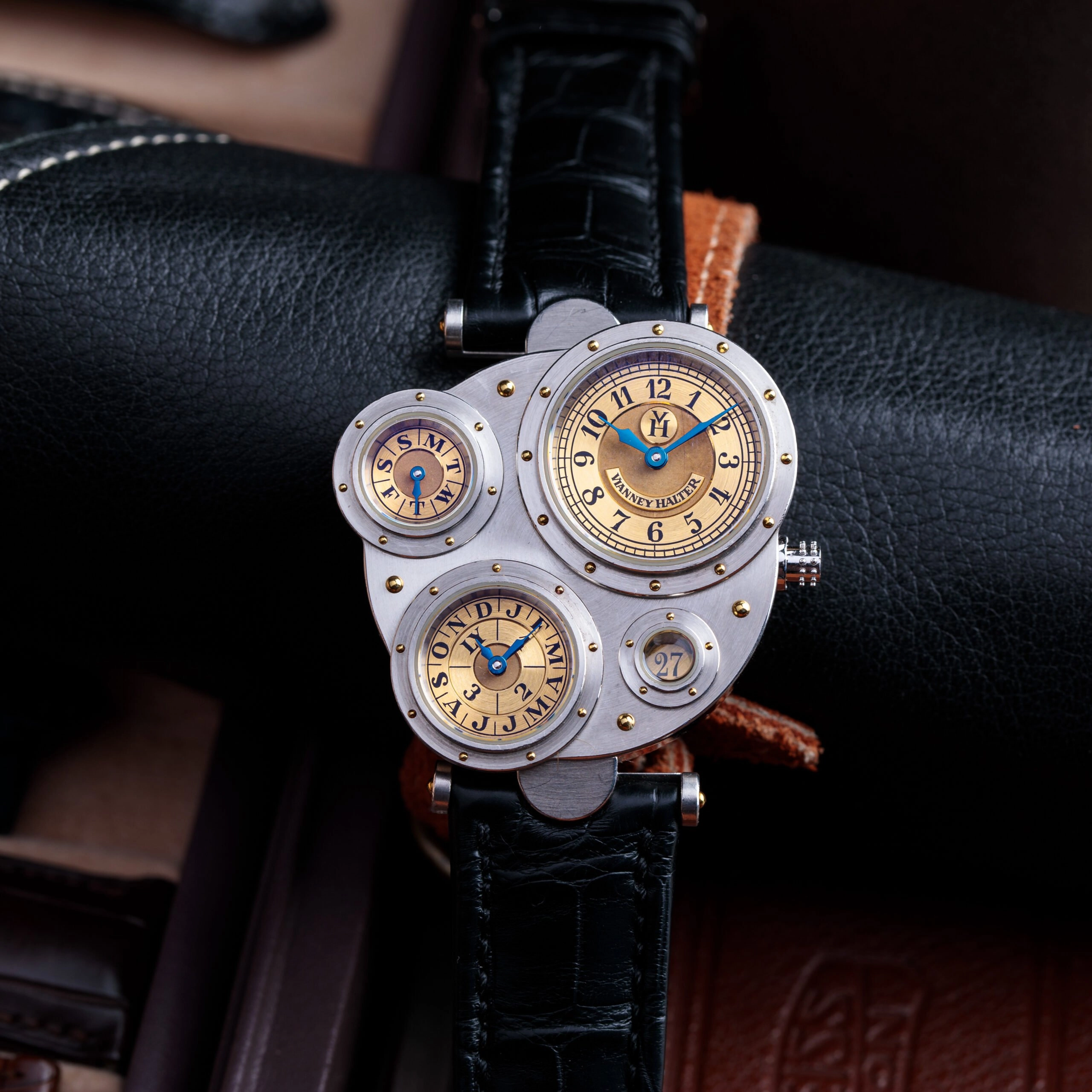
There are a handful of watchmakers in the independent watch world that aren't yet household names within the broader collecting sphere — which is surprising given that everyone and his dog is into watches these days. Sure, we all know the poster boys like Max Büsser and François Paul Journe, but somehow the mention of the name Vianney Halter more often than not draws a blank stare. Why? Because Halter was there before being an indie maker was cool. He lived and created through the trials and turmoils of the late ‘90s and the ‘00s, before the buzz of social media brought watch collecting into the spotlight. What’s more, he went over the top and outlandish right out of the gates, as with the Antiqua Perpetual Calendar seen here. It was the first watch to bear his name, and one with such a bold yet somehow timeless character that it could just as easily have been made today.
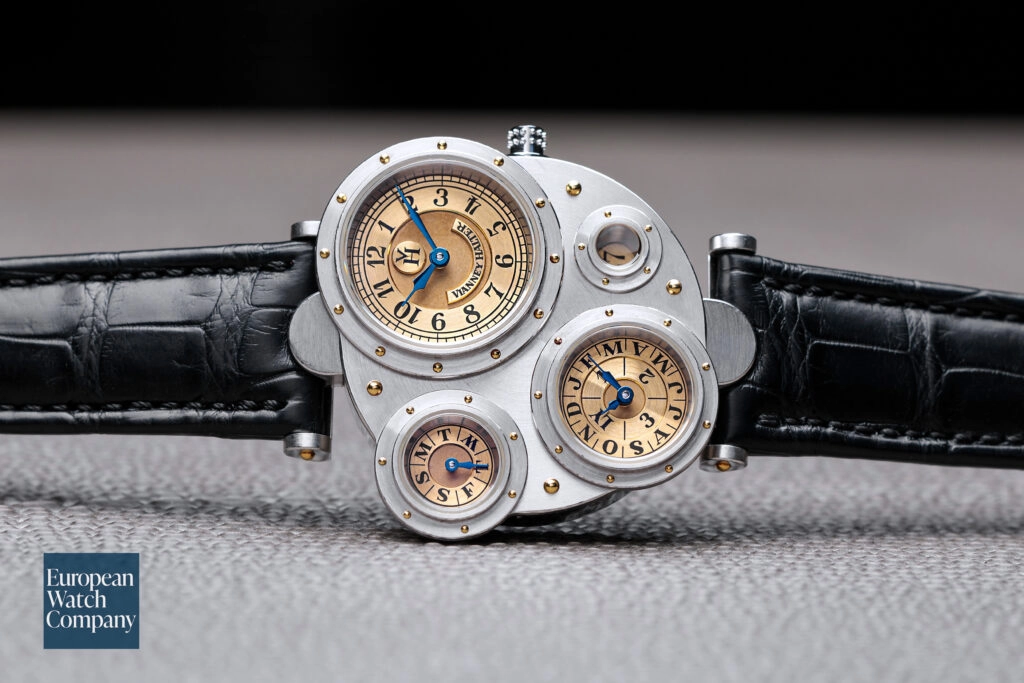
History
The backstory of a maker’s first watch is always interesting, and the Antiqua definitely does not disappoint. The model's development took a full decade and was full of all kinds of twists and turns. After roughly ten years working in the world of antique clocks, Vianney Halter founded his first watchmaking venture in 1994, known as Techniques Horlogères Appliquées, in partnership with F.P. Journe (the man himself, not the brand) and Denis Flageollet of De Bethune. The venture was a complications firm rather than a stand-alone brand, but imagine if those three had founded a watchmaking super-group at that time!? We can still dream...
Vianney went on to work with the next indie master of the day, Franck Muller, working on ever more complex watches before finally kicking things off with his own brand and the Antiqua in 1998. What’s rather interesting about the Antiqua, from a historical standpoint, is its extreme rarity. Less than one hundred examples were crafted in total even though the official production run lasted for almost twenty years until 2016. It was offered in a range of materials and dial variants, with the example seen here being the scarcest of them all. This platinum and yellow configuration is one of just five produced.

Design Details
And now the word I was so desperately trying to avoid is forced to enter the chat: steampunk. The problem I have with using that word is that almost anything else that falls into that design category is often so performative. Aside from a few bits of stylized sci-fi cinema, steampunk design is relegated to costume parties and the occasional corner of Spirit Halloween. I tend to prefer the language choice deployed by Halter himself: “A watch from the future. Albeit not ours, but the future as it could have evolved from the Victorian era. A future inspired by Jules Vernes and H.G. Wells.”
This is a watch packed with details upon details, oddities upon oddities. To some, the portholes displaying different indications are weird and unorthodox, but taking a step back from traditional watchmaking for a moment, what these individual dials really do is separate information into a vastly more practical layout than that of a typical perpetual calendar. This is a hill I will happily die on — in terms of clarity of information, the Antiqua is a hero. Plus the font choice, the dial finishes and textures, as well as those flame-blued hands are absolutely stunning. If you can get yourself past this obsession with traditionalist design codes, you’ll promptly fall in love with this watch.
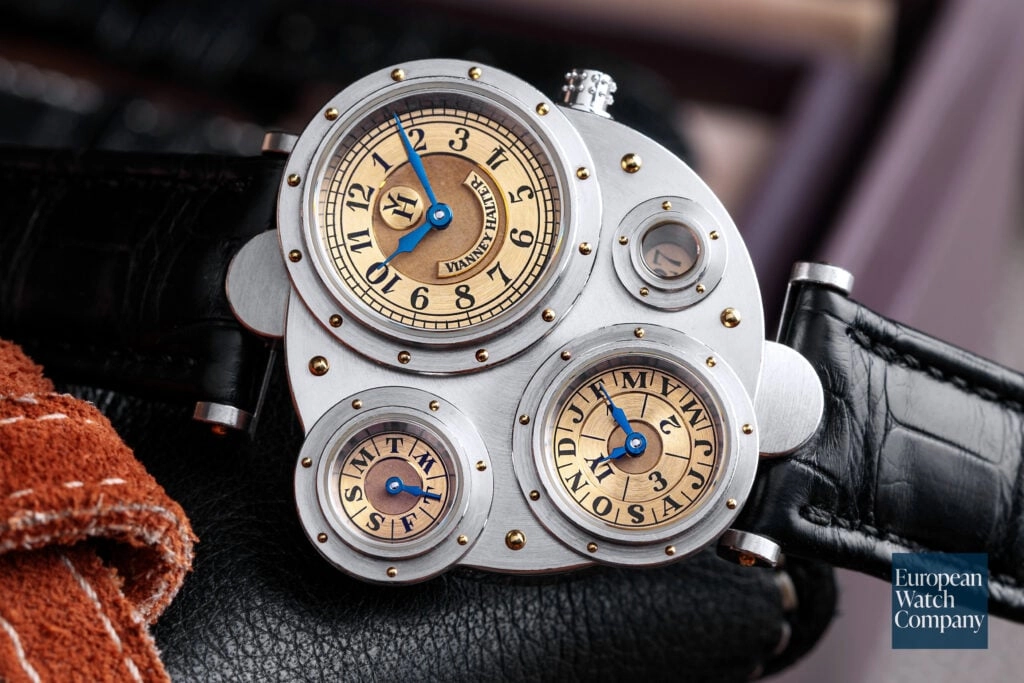
Inner Workings
The backside of the Antiqua, at least in contrast to the dial side, is quite conservative. A hidden rotor — a sapphire disc, center-mounted and trimmed with a patented “mysterious mass” outer ring — lets you enjoy the fine finishing of its monolithic bridge and balance cock to the absolute fullest, but there’s little else to observe out back. From a technical standpoint, it’s interesting to consider that so many of the caliber's 320 components are entirely hidden, leaving us to enjoy the vast majority of the 130 pieces that make up its magnificent casing. The movement beats away at a rather standard 28,800 vibrations per hour, managing a power reserve of 35-hours. Considering it’s a perpetual calendar of peculiar construction, that’s not half bad. A standard fare ETA 2824-2 or Sellita SW-200 (the basic bare bones Swiss “do everything” 3-hand calibers) tend to offer a power reserve of 38-hours at the same beat rate, for context.
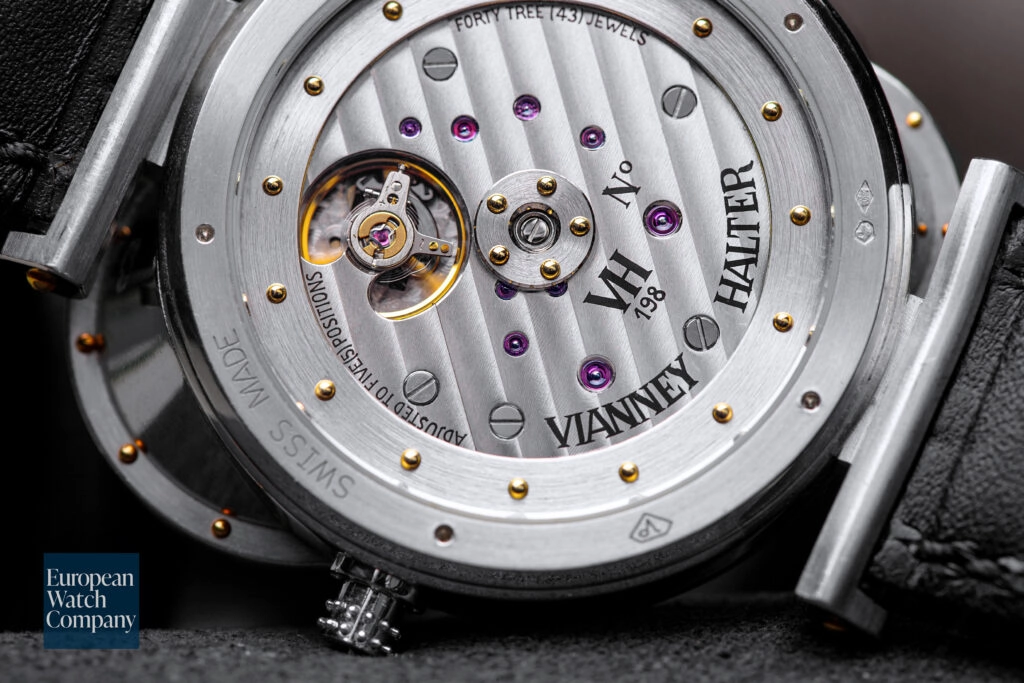
Versus The Competition
There are two different ways to approach this question. On the one hand, we can ask what watch out there is anywhere near as outlandish as the Antiqua, to which the answer will always be MB&F. Whether it’s the MB&F Horological Machine No. 2, the 10th anniversary HMX, or even the HM10 Bulldog, these watches all keep up with both the peculiar design and innovative engineering of the Antiqua.
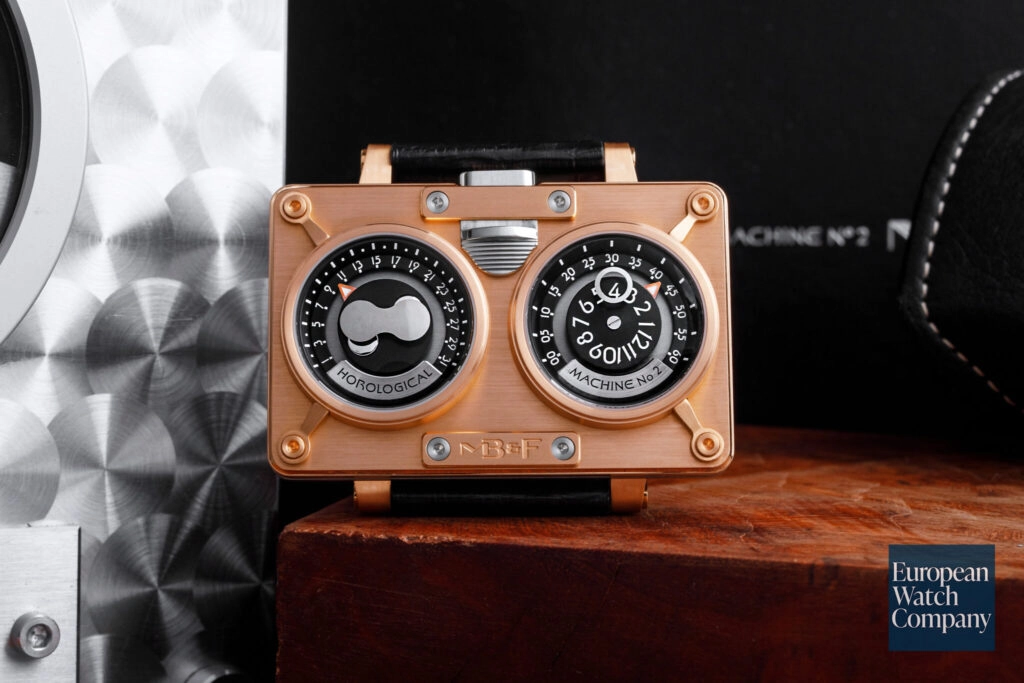
On the other side of the coin, we have to consider pieces from the other forefathers of independent watchmaking. On that front, we’re talking about the FP Journes, the Franck Mullers, the De Bethunes, and the Philippe Dufours of the world. If it were me, rather than gunning for the two “hot tickets" of the moment on that list, I’d be looking at things like the rare Franck Muller "The Complications" Chronograph Double Face, or perhaps the even more obscure Roger Dubuis Sympathie Perpetual Calendar Bi-Retrograde Chronograph.
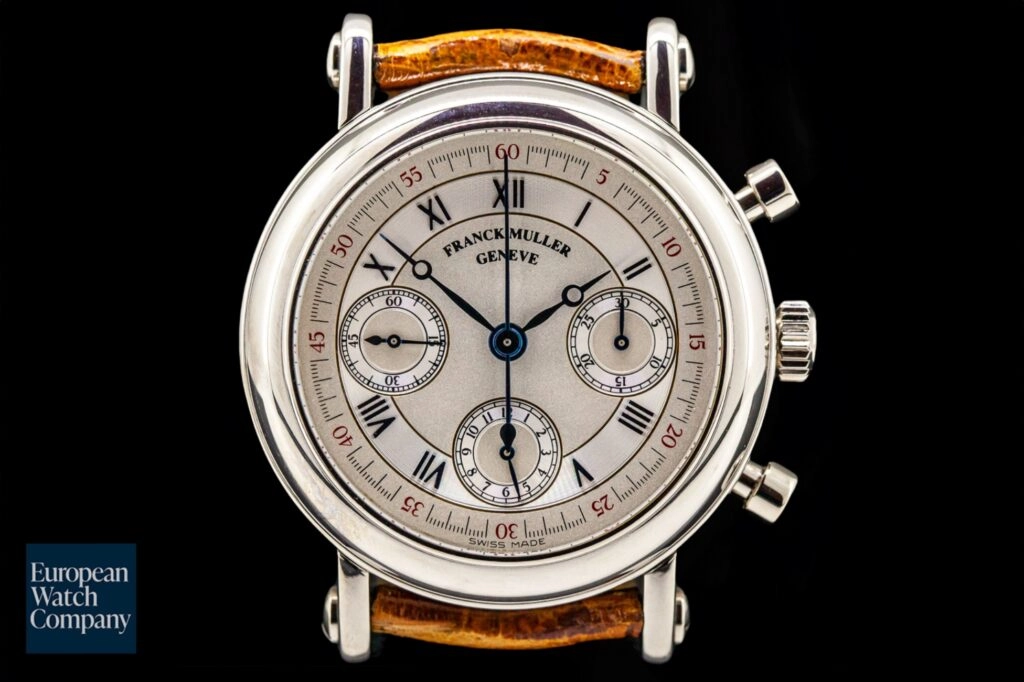
Personality
As far as we’re concerned, this is really a peak-level “inside baseball” kind of watch. The person gravitating towards a piece like this has seen it all, has been up one side and down the other of the independent watchmaking catalog past and present, and truly wants to embrace and preserve a piece of history. If this was somehow someone’s first watch from an independent maker I’d be shocked, but I’d also applaud it. After all, why not swing for the fences. This will by no means be an inexpensive acquisition, but this really is a case of acquiring history rather than just another cool indie watch from a cool indie maker.

Final Thoughts
I’ll say it - Vianney Halter is a name that should be shouted from the horological rooftops. Hell, the man is still making fantastic watches today, one of which (his Deep Space Resonance) was worn by William Shatner on his Blue Origin flight. Shatner and Vianney remained in contact after the flight and Vianney crafted a special Deep Space Tourbillon for him shortly thereafter. In contrast, his “La Resonance” marries traditional watchmaking codes with the absolute stripped-down essence of skeletonized movement craft. While his new work is quite exceptional, to get your hands on one of his earliest and rarest pieces is seldom an easy task, and it’s not getting any easier once this one is gone.

